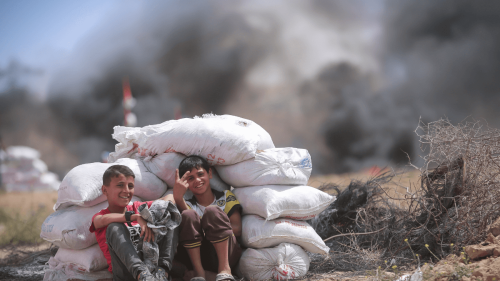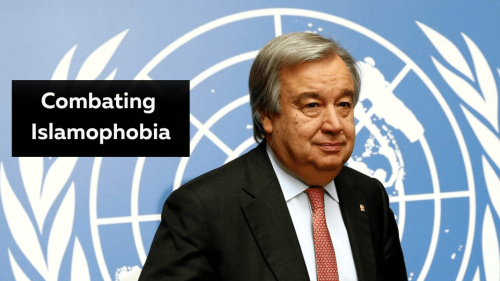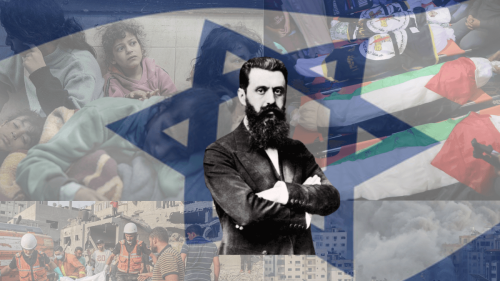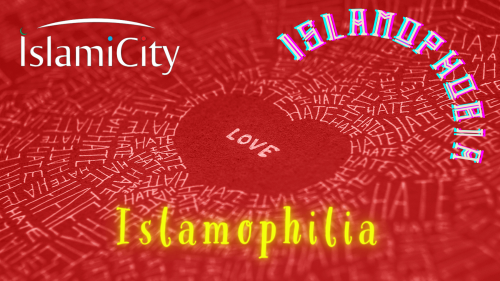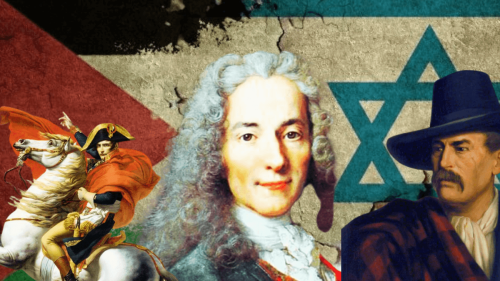Saint Sava of Serbia and Islamophobia
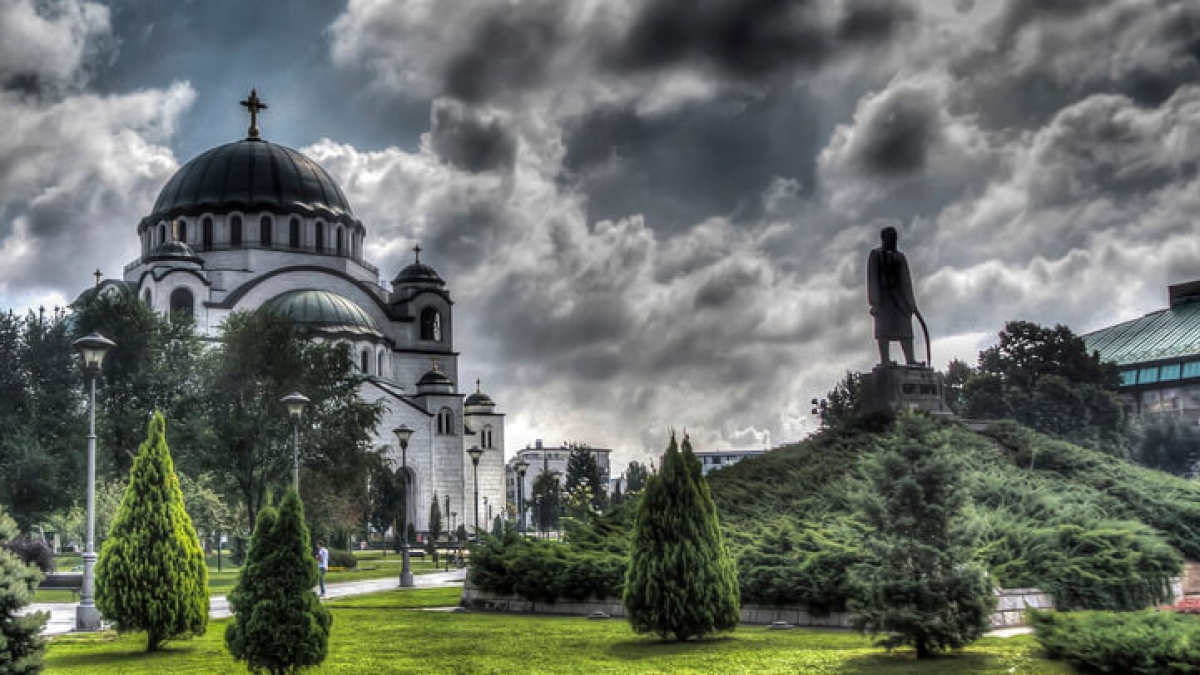
Summary: This article discusses the Islamophobic views of St. Sava of Serbia. The discussion is set against the background of several religious and socio-political realities in medieval Serbian society. The article concludes that St. Sava was a precursor of Serbianism as a nationalist ideology. He spoke against Islam as a potential threat to the interests of the nascent Serbian Kingdom and its newly independent Orthodox Church. However, St. Sava was ignorant about Islam, making him unqualified for the task. Ascertaining the truth was never the object of St. Sava’s undertakings, which rendered his ineptitude irrelevant rather some ulterior motives were at play. This means that St. Sava was also a harbinger of the early forms of Islamophobia, not only within the Serbian society but well beyond, suggesting that all the subsequent Islamophobes of Serbia were his followers; they were his ideological “children.” The article has three main parts. First, the case of St. Sava and his Zakonopravilo code is introduced. Second, an elaborate list of St. Sava’s errors concerning Islam and Muslims is presented. As many as twenty-two errors are featured. Third, St. Sava’s errors, which are rooted as much in ignorance as in bigotry, are analyzed.
St. Sava (1175-1236) – born as Rastko Nemanjić – was the son of a Serbian prince. Having been a prince himself, St. Sava (Sveti Sava), at the age of eighteen, decided to abandon such a lifestyle and become a monk. He is regarded as one of the most important persons in Serbian history, making him a national hero. He was the founder of Serbian law and also the founder of the Serbian Orthodox Church. He is the patron saint of Serbia, the Serbian people, and Serbian education.
Since, at the time, the state was a twin sister of the church, St. Sava was instrumental in the creation of an independent Serbian state. Thus, while dwelling on the theme of the first coronation churches of medieval Serbia, Jovanka Kalić concluded that in laying the foundations of an independent medieval Serbia, the contributions of St. Sava were on par with those of the first Nemanjić rulers who in the political arena were doing so “carefully and wisely.” The process of attaining independence was twofold: political and religious, which implies that the political elites had to be somewhat religious. While ecclesiastics or clergymen had to be politically oriented (Jovanka Kalić, The First Coronation Churches of Medieval Serbia).
That is why, for example, Stefan Nemanja (d. 1199), the father of St. Sava - who was the Grand Prince of the Serbian Grand Principality and, in his capacity as the founder of the Nemanjić dynasty, one of the early Serbian ideologists - in the end became a monk and was given the name Simeon. Similarly, Stefan’s son and successor - that is, St. Sava’s brother - Stefan Nemanjić (d. 1228), who transformed the Serbian Grand Principality into the Kingdom of Serbia and was the new Kingdom’s first king, also became a monk eventually and was given the name Simon. Whereas St. Sava, despite his religiosity and rigorous monastic life, was at the same time his country’s envoy and, whenever necessary, peace-maker. He was rarely absent from the Serbian political scene.
In 1830, St. Sava became the patron saint of Serbian schools and Serbian schoolchildren. Hence, the feast day of St. Sava, which now falls on January 27 of the Gregorian calendar, is a working holiday for the Serbs. On that day, many children, instead of going to school, head to churches for recitals. Both the personality and legacy of St. Sava are eulogized. The holiday is likewise called Spirituality Day. The man did so much for the Serbian nation and culture that he became their epitome. Every Serb can identify himself with and in the personality of St. Sava, and every aspect of Serbian history, as well as culture, can relate to it.
In Belgrade, there is the Church and Temple of Saint Sava which was built in 1935-41. It is considered an architectural masterpiece, resembling Hagia Sophia in Istanbul in terms of dimensions and architectural style, it is thus one of the most prominent landmark structures in the city. Dedicated to St. Sava, the church is one of the largest Orthodox churches in the world. It was meant to be not only the main cathedral of the Serbian Orthodox Church but also its seat and existential symbol. It was to be a historic, national, and a religious icon. In passing, that the Church and Temple of Saint Sava were made similar to Hagia Sophia was by no means a coincidence. The Church aimed at causing the observers and users of the building not to forget the lost historical focal point of the Eastern Orthodox Church. It was essential that the architectural objectives of the Church were educational and also inspirational.
As a son of Serbian Grand Prince Stefan Nemanja, St. Sava received a princely education at the Serbian court. The educational content was in the Byzantine tradition, which “exercised great political, cultural and religious influence in Serbia.” St. Sava is said to have been intelligent, wise, and keen. He was a respected Orthodox Christian scholar whose ascetic career started in the monasteries of Mount Athos in north-eastern Greece. In 1219, he was recognized by the leadership of the Eastern Orthodox Church with its epicenter in Constantinople as the first Serbian Archbishop, after which he lobbied for and succeeded in securing an independent (autocephalous) status for the Serbian Orthodox Church.
What is Zakonopravilo?
St. Sava was a prolific writer too. Many regarded him as the founder of Serbian medieval literature. One of his prominent works was Zakonopravilo or Nomocanon of St. Sava. Zakonopravilo was a collection of (Byzantine) ecclesiastical or church canons and civil laws. It was meant to organize and sustain the functioning of the newly established Serbian Kingdom (in 1217) and the newly attained independence of the Serbian Church (in 1219). The two called for each other.
To create the lasting foundations both of an independent state and an independent church, it was necessary to produce a legal system. That was the reason why St. Sava created his Zakonopravilo, which expectedly featured decrees that organized the life of the church and also myriads of norms that aimed at regulating civil life. No wonder that the growth of the Serbian state and the growth, coupled with the strength, of the Serbian Church has always been bracketed together in the historical narratives of Serbian traditional scholarship.
Zakonopravilo was used for legitimizing the state and validating the church. To St. Sava, the Serbian Church's independence was the only thing that had lacked in the state for its regularization and proper functioning. It furthermore should be recalled that while St. Sava faced no obstacles whatsoever in being consecrated to become archbishop of the Serbian land by the holy patriarch of Constantinople, German, in presence of the Byzantine Emperor and all his nobles, so as to become the first apostle, teacher, and enlightener of his fatherland, getting an approval for an independent (autocephalous) Serbian Church was not as smooth. It has been reported that when St. Sava so requested, the subject was not very pleasing to the Emperor and the holy patriarch. However, only owing to the great love they had for St. Sava, they gave their consent. It follows that Zakonopravilo, as the highest code of the Serbian Church, was completed in 1219 which is the same year when the church's independence was obtained, in order for St. Sava to justify the trust the Byzantine Emperor and the holy patriarch of Constantinople had placed on him and Serbia as a whole.
Therefore, Zakonopravilo is hailed as one of the most consequential statutory undertakings in the history of Serbia. Even though it had been taken from a variety of Byzantine sources, Zakonopravilo was fine-tuned to befit the prevalent conditions of Serbia. St. Sava’s by and large minor interpretations and commentaries abound, which augmented the code’s value. Historically, the impact of Zakonopravilo extended beyond the borders of Serbia. The influence was as much political as religious. For instance, the Bulgarian and Russian Orthodox Churches were those that accepted the code (Petar Zorić, Zakonopravilo of St. Sava and Legal Transplants).
Bigotry and Ignorance in Relation to Islam and Muslims
Zakonopravilo consists of numerous sections. However, there are two sections in which St. Sava speaks about Islam and Muslims. The first section is a part of the author’s presentation of Christian heresies, wherein he delved into the case of Islam as one of those heresies. The second section is what St. Sava called “The rite performed on those who convert from Saracenes (Muslims) into this pure, genuinely Christian faith of ours” (Miodrag Petrović, Zakonopravilo Svetoga Save o Muhamedovom Učenju, Zakonopravilo of St. Sava on the Teachings of Muhammad).
Reading through what St. Sava wrote about Islam and Muslims leads one to several conclusions, namely that there is nothing honest or scientific in the texts; that most of the things written are modes of bigotry and ignorance copied from other Byzantine inept and biased sources; and that introducing Islam and Muslims as compelling ideas and realities was never intended by way of inserting those discourses into the pages of Zakonopravilo. What was actually intended was to pre-empt the approaching risk of the Serbian people’s acquaintance with the actual picture of the traditions of Islam.
The presence of Islam was undeniable. Wherever Islam arrived, it did so to stay. As it was constantly making inroads into the Byzantine territories, ideologically and militarily, nobody could tell for sure what was going to happen in the future. To many people, Islam’s triumphant arrival to the rest of the Byzantine world – including the Balkans - was not the question of “if” but “when”. Therefore, the people needed to be prepared. They needed to be indoctrinated and brainwashed, developing thereby an “immunity system” that would protect them from the perils of Islam and its followers.
So, whenever the people were forced to make contact with the realities of Islam and Muslims, the “immunity system” would be activated. By hook or by crook, the masses had to resist. Other than this, it stands to reason, St. Sava had no other reason to talk about Islam, Muslims, and the probability of conversion from Islam to Christianity, and vice versa, within the framework of a Serbian enlightenment through the Serbian law and the precepts of its Orthodox Church.
Nonetheless, since the messages of St. Sava were rooted in preconceptions and narrow-mindedness, they were able to impair. Nothing constructive could they generate, neither on their own nor in the midst of environments with Islam’s presence. All potential dealings with Muslims were thus affected, yet ruled out. The people were intended to be made blind, thoughtless, and even xenophobic. Instead of letting the people think for themselves, somebody had already performed that duty for them; and instead of letting them judge matters from their own points of view, the judgments had already been precast and supplied for them.
It was feared that unless this approach was adopted, when afforded an opportunity many Serbs would have flocked to the fold of Islam on account of the latter’s attractive propositions, such as polygamy, “easy” divorce, the boundless rewards of a martyr (shahid), and the infinite pleasures of Paradise (Jannah). Hence, Islam and its beauties, together with alleged leniencies, had to be depicted and served as mere profanities, vulgarities, contradictions, and manifestations of fanaticism.
This was the main reason why the majority of Serbs were never disposed to consider the issue of Islam seriously, much less to embrace it as the final Testament to the world. The people were not trained to pursue the objective truth and to live accordingly as the core of their raison d’etre, but rather to live preordained lives mandated by an array of ethnocentric and ideological propensities, as well as historical and socio-cultural constructs.
In the introduction of his book Zakonopravilo Svetoga Save o Muhamedovom Učenju, Zakonopravilo of St. Sava on the Teachings of Muhammad, Miodrag Petrović had exactly this in mind when he said that the number of Serbs who throughout history accepted Islam would most likely have been even more alarming had St. Sava not had the foresight and had he not produced Zakonopravilo long before the appearance of Muslims on the Balkans with the intention of “educating” and preparing his people. The man was a Serbian savior par excellence. He saved them from Islam.
St. Sava’s objectives were later mimicked somewhat by Martin Luther (d. 1546) who, while not discounting the possibility of the Turks (Muslims) overrunning most of Europe from the 16th century onwards, was readying his fellow Christians for a life under the Muslim rule. “Let us now prepare ourselves against Muhammad”, was the rallying cry of Luther. At any rate, it goes without saying that Zakonopravilo was instrumental in forging at once Serbian nationalism and religious extremism, neither of which was able to sustain itself without the other. This close relationship never really eased up till today.
One then wonders to what extent St. Sava was the enlightener of his people, as he was customarily known, working on the religious and cultural enlightenment of Serbia, and educating its people in Christian morality, love, and mercy. One also feels one has the right to ask and know how compatible St. Sava’s preaching of the morals, love, and kindness of Christianity was with the components of prejudice and intolerance towards Muslims, which his views and perceptions clearly entailed. And finally, one is entitled to inquire why the mistakes and falsehoods that were featured in St. Sava’s expositions are yet neither admitted nor corrected. Public opinion in medieval times might have been easily manipulated, but such was not the case in subsequent times, including ours.
The List of St. Sava’s Errors
The following are the mistakes and falsehoods associated with St. Sava’s views (based on: Miodrag Petrović, Zakonopravilo Svetoga Save o Muhamedovom Učenju, Zakonopravilo of St. Sava on the Teachings of Muhammad).
First, Islam is the forerunner of the Antichrist. The only goal of Islam is to dupe and cheat people.
Second, the originator of Islam is Prophet Isma’il (Ishmael).
Third, Muslims call themselves Saracens. All in all, Muslims are called Saracens, Ishmaelites and Agarenes. St. Sava’s favourable names for Muslims were Saracens and Ishmaelites. However, the two names were projected to be poisoned chalices.
The Ishmaelites label was given because of Prophet Isma’il (Ishmael), who was born to Abraham (Prophet Ibrahim) of Agar (Hagar as Ibrahim’s second wife). Muslims thus were destined to take a subordinate position to the line of Isaac (Prophet Ishaq) as another son of Abraham, who was one of the three patriarchs of the Israelites and the grandfather of the twelve tribes of Israel. Isaac’s son was Jacob (Prophet Ya’qub), later named Israel.
Accordingly, the reputation of Ishmael was not illustrious. The Bible says about him: “He shall be a wild donkey of a man, his hand against everyone and everyone’s hand against him” (Genesis, 16:12). The word “Ishmael” later became synonymous with “social outcast and pariah”, for Ishmael and his mother Agar (Hagar) were cast out by Abraham and Sarah at the behest of the latter.
It follows that Muslims as a nation exemplified the spirit of Ishmael, the father of Arabs. It is said in the commentary of the above biblical verse that Ishmael, just as prophesied, lived in “a wilderness, delighting in hunting and killing wild beasts, and robbing and plundering all that pass by; and such an one Ishmael was… And such the Saracens, his posterity, were, and such the wild Arabs are to this day, who descended from him.” So widespread and powerful was the idea that in the English language the word “Ishmael” came to denote “castaway”, “outlaw”, “pariah”, “reject”, and “persona non grata”.
Moreover, on the surface, the word “Saracens” is derived from Sarras kenoi, or destitute of Sarah, because of what Agar (Hagar) said to the angel: “Sarah hath sent me away destitute (empty).” However, on closer examination, and consistent with inferences made by many researchers, the designation of “Saracens” is derived from the Arabic words “sariqa” and “sariq”, which mean “to steal” and “thief” respectively. In that case, “Saracens” would mean “thieves”, “raiders”, and “plunderers”, supplementing the understood meanings of “Ishmaelites”.
Fourth, St. Sava did not distinguish between the Islamic era and that which preceded it. Every epoch after Ishmael was an Islamic epoch (that of the Saracen religion). To St. Sava, the universal religious dimension of Islam and the national dimension of Arabs were indivisible, with the latter yet subtly presiding over the former. Hence, St. Sava concluded that Muslims, at first, were idol-worshippers. Among other things, they used to worship the morning star and goddess Aphrodite, whom they themselves called Habar (perhaps kabir) in their own language, which means “great”. Thence the famous Islamic idiom “God is great(est)” has been derived.
Fifth, St. Sava was confused between the black stone (al-hajar al-aswad) as part of the Holy Ka’bah in Makkah and the stone (maqam or station) of Prophet Ibrahim near the Ka’bah. He repeatedly referred to the stone as Ibrahim’s stone, which Muslims – according to St. Sava - venerate greatly either because Ibrahim had intercourse with his wife Hagar on it, or because Ibrahim tied the camel on the stone when he was about to sacrifice his son Isaac. However, St. Sava deduced that the stone – either the Ka’bah’s black stone or the station of Ibrahim -- is the head of the goddess Aphrodite, whom Muslims used to worship, upon which, even now, one who looks carefully can see traces of a carving. As a result, Muslim pilgrims persist to rub themselves against the stone and express their veneration for it by kissing it. This insinuates that Muslims, as a matter of fact, never gave up their idolatry-related falsehoods.
Sixth, St. Sava claimed that Prophet Muhammad (or Moamed) was a false prophet and an impostor. Islam was a mere superstition and a form of deviation. It is a plagiarized religion within whose bosom all forms of evil had been collected. St. Sava alleged that having conversed with the Jews, Christians, and an Arian monk, Muhammad devised his own heresy called Islam. The main references of the message of Islam were the existing predominantly Jewish and Christian deviations. For this reason, the chapter of Zakonopravilo in which St. Sava talked about Islam is called “Articles about Heresy”.
Seventh, St. Sava said that Muhammad started to assert that he was receiving a heavenly revelation from Almighty God only after he had won over his Saracenic people. He did so under the pretext of following nothing but the truth. St. Sava thus suggested that Muhammad was a clever operator. The many years that preceded the announcement of his prophethood were the years of planning, manipulation, and waiting for the opportune moment. Timing was everything.
Eighth, in St. Sava’s opinion, the Qur’an is the product of Muhammad’s cheatings and trickeries, resulting in its contents being akin to foolish tales worthy of laughter.
Ninth, St. Sava misstated that according to the Qur’an, Maryam or Mary, the mother of Prophet ‘Isa (Jesus), was the sister of Prophets Harun (Aron) and Musa (Moses).
Tenth, St. Sava wrote that Muhammad received the Qur’an in his dreams. St. Sava made fun of it saying that the whole matter on Muhammad’s part was no more than wishful thinking. Sarcastically, St. Sava equated the case with the moral of a Serbian proverb “Što je babi milo, to joj se i snilo.”
Eleventh, St. Sava called Muslims, again rather sarcastically, “mutilators of God”. This is because Muslims, like Christians, believe that Christ is the Word and Spirit of God, but consider both the Word and Spirit to be outside of God, in which case God is without Word and Spirit. So - St. Sava said - while Muslims falsely call Christians “Associators”, Christians should call Muslims “mutilators of God”.
Twelfth, St. Sava stated that in the Qur’anic chapter or surah al-Nisa’ (Women) Muhammad legislated that a man can have four wives and as many concubines as he wants or can afford, even a thousand. Of his four wives, a man can divorce anyone and let her go at any time, if he so desires, after which he can marry another woman. Thus, a man can also have as many wives as he wants.
This accusation is comparable with what Martin Luther said in the 16th century in his book “On the war against the Turks”: “The third point is that Mohammed’s Koran thinks nothing of marriage, but permits everyone to take wives as he will. Therefore, it is customary among the Turks (Muslims) for one man to have ten or twenty wives and to desert or sell any of them that he will, when he will, so that in Turkey women are held immeasurably cheap and are despised; they are bought and sold like cattle. Although there may be some few who do not take advantage of this law, nevertheless this is the law and anyone can follow if he will. Such a way of living is not marriage and cannot be marriage, because none of them takes a wife or has a wife with the intention of staying with her forever… Thus the marriage of the Turks closely resembles the chaste life that the soldiers live with their harlots.”
Thirteenth, to St. Sava, with regard to women, Muhammad led by example. By way of illustration – according to St. Sava - once Muhammad fell in love with the wife of Zayd, a companion and something of an assistant to Muhammad, whereupon he asked Zayd to divorce his wife so he could marry her. When Zayd asked for the rationale, Muhammad silenced him by quoting a revelation of God to the effect that God Himself had so commanded. Zayd consented and said that a prophet of God should do as instructed. Afterwards, the woman was divorced and Muhammad married her, “committing adultery” in the process.
Undoubtedly, this was a part of concerted centuries-old efforts to depict Prophet Muhammad as a pervert and sexual psychopath. Given the relatively early age of St. Sava, his contributions were trailblazing.
Fourteenth, St. Sava spoke about the non-existent Qur’anic chapter or surah called “God’s camel”, which, expectedly, is replete with nonsense. The subject matter of the chapter bears a resemblance rather to a fairy tale or a myth. But what is interesting is that, on the premises derived from the imaginary chapter and its conjured content, St. Sava tried to establish a body of arguments that in fact bordered on absurdities. In any case, this point typifies the case of St. Sava’s treatment of Islam, which is punctuated sometimes with exaggerations and misconceptions, and at other times with outright errors and fabrications
Fifteenth, St. Sava translated the largest and most frequently articulated Qur’anic chapter, al-Baqarah (the Cow or the Heifer), as “the Bull” (Vo in Serbian and Bosnian). Whereas, indeed, nobody who has the slightest knowledge of Islam would ever do that; such is the prominence of the said chapter in Islamic scholarship. There is no evidence of anybody else subscribing to the same inaccuracy.
Sixteenth, as per the Islamic “knowledge” of St. Sava, the Jews and Christians will be in Hell and will be used as its fuel. On the other hand, the Samaritans (the followers of an ancient form of Judaism) will be in Paradise (Jannah), albeit as its “cleaners”. Their specific tasks will be taking out the trash from Paradise and the feces (explicitly govna) of Muslims - who by the way will be the only worthy inhabitants of Paradise - lest those would stink up the honorable place.
Seventeenth, St. Sava “taught” that the residents of the Islamic Paradise will be so huge that their sizes will reach the sky. What is more, the private parts of the male members will be forty-cubit-long (40 lakata). Sexual intercourses will be conducted insatiably and shamelessly inside Paradise, for God is not timid or ashamed.
Eighteenth, St. Sava emphasized that Islam is a religion of excessive fatalism. Everything, good or bad, is ascribed to God alone. Man does nothing of his own accord. In consequence, all types of criminals and wrongdoers are like so exclusively on account of God’s will. God wanted them to be what they are: to be born, live and die like that. Hence, accountability either in this world or in the Hereafter is unjustifiable.
Nineteenth, St. Sava brought Islam to task over its supposed claim that the sun and moon are knights or horse-riders (konjanici).
Twentieth, St. Sava explained one of the main rituals of the Hajj pilgrimage in Makkah as follows. Pilgrims place one of their hands on (Ibrahim’s) stone featuring the face of the goddess Aphrodite, and with the other hand they hold their ears. In such a manner, pilgrims whirl and rotate until they collapse unconscious.
Twenty first, St. Sava told untruths when he stated that Muhammad demanded ridiculing and hating the Christians, and that for Muslims the path of God is the path of fighting the Christians, and whoever dies on that path is considered a son of God.
Twenty second, St. Sava did himself – and everybody else on both sides of the religious divide – no favors when he in his piece “The rite performed on those who convert from Saracenes (Muslims) into this pure, genuinely Christian faith of ours” demonstrated hatred and a propensity to insult the sacred things of Islam. The content of the Rite is tantamount to an ultimate form of vulgarity and disgust, which, when all is said and done, is not expected from a holy man or a person whose morals are unquestionable. In the Rite, St. Sava asked the new converts to Christianity (new Christians) to curse and swear at basically everything Islamic: personnel, institutions and beliefs. The message implied is that one cannot be a good Orthodox Christian - including St. Sava himself - unless one hurled abuses at the sacred things of Islam. This was due for new converts, while the same was expected to be the case with the existing and “proven” Christians.
The Rite features the formula “I swear at…(Proklinjem…)” as many as twenty four times. Among the things cursed are Prophet Muhammad himself, his wives and his companions some of whom have been named as they were particularly targeted, the Prophet’s daughter Fatimah, the Qur’an, Muhammad’s God, Paradise (Jannah), certain angels and certain prophets connected with Islam only, the city of Makkah and all its surrounding holy places, the Ka’bah and its holy mosque, prayer, ablution, and a number of other Islamic laws, values, and practices.
Comments on St. Sava’s Views
What follows are five comments on the above presented views of St. Sava concerning Islam and Muslims.
First: St. Sava’s ignorance about Islam
St. Sava was ignorant of Islam. Even his little knowledge about it, when juxtaposed with his numerous misunderstandings and downright mistakes, tend to fade away. However, regardless of what St. Sava genuinely wanted, he could not change the picture. It was virtually impossible for him to fare better. Thus, to be fair-minded to the man, he was not the sole culprit; like many others, he in some measure was a victim of circumstances too.
St. Sava did not know Arabic, nor did he spend any significant time among Muslims, apart from what he could manage – if so wanted - during his two pilgrimages to the city of Jerusalem - something like what Riccoldo da Monte di Croce (d. 1320), an Italian Christian missionary with a conspicuous Islamophobic penchant, could claim to have done. Unquestionably, St. Sava’s limitations were obvious, and the more he talked about Islam the more they became exposed.
Moreover, St. Sava’s access to the appropriate literature was also inhibited, rendering him unqualified to speak about Islam in a manner he did, as though he commanded authority in the field. During St. Sava’s time, by and large, not much had been written about Islam in European languages, whereas that which was available was generally fractional, patchy, inaccurate and prejudiced. There was only one complete translation of the Qur’an. It was in Medieval Latin and was accomplished by Robert of Ketton (d. 1160) at the behest of Peter the Venerable (d. 1156), a prominent personality in the monastic and literary reawakening of 12th-century Europe. The translation was carried out in 1143, thirty-two years before St. Sava was born.
However, this oldest Latin translation of the Qur’an was later criticized for being unreliable and imprecise. Its problematic character is implied in the title itself: “Law of Muhammad the False Prophet.” One of the chief objectives of the translation was to hinder the Muslim proselytization of Christians and to start a reverse process. In the book titled “The Qur’an: An Encyclopaedia” edited by Oliver Leaman, it is said that Robert of Ketton the translator was “always liable to heighten or exaggerate a harmless text to give it a nasty or licentious sting, or to prefer an improbable but unpleasant interpretation of the meaning to a likely but normal and decent one.” This Latin text of the Qur’an formed the basis for several other medieval translations. There did not appear a different Latin translation until 1698.
Martin Luther – parenthetically - famously lamented the lack of Latin (European) references on the religion of Islam, both quantity and quality-wise. It was not until about four years before his death, in 1542, that Luther received a full copy of the Qur’an as translated by Robert of Ketton. The Qur’an was yet to be published, so Luther worked on securing support for the publication. The task was fulfilled in 1543 by Theodore Bibliander (d. 1564), a Swiss reformer, Christian missionary, and apologist. For this first printed edition of the Qur’an in Latin, Luther wrote his well-known preface.
Second: St. Sava’s copying from other sources
St. Sava’s expositions about Islam and Muslims were not his. He copied the substance of every theme from two major sources: “the Heresy of Ishmaelites” by John of Damascus (d. 749), who was a Christian monk, priest, and scholar, and who was the first to plant the seeds of extremist anti-Islamic polemics and even Islamophobia; and the polemical work(s), containing an Islamophobic sting, of George Hamartolos or George the Monk (9th century), who was a Byzantine monk and historian.
St. Sava’s contributions were in terms of simple remarks and embellishments. This applies to one of the two parts of Zakonopravilo wherein St. Sava dealt with the Islamic heresy of Muhammad. But in the second part, which is “The rite performed on those who convert from Saracenes (Muslims) into this pure, genuinely Christian faith of ours”, St. Sava fundamentally in his own words reproduced most of the material from the first part, formulating the specifications and subject matter of the oath associated with the said Rite (Miodrag Petrović, Zakonopravilo Svetoga Save o Muhamedovom Učenju, Zakonopravilo of St. Sava on the Teachings of Muhammad).
By the way, the entire Zakonopravilo is a form of anthology of Byzantine nomocanons (ecclesiastical civil and canon laws), with or without explanations. There are research studies dedicated to determining the nature and scope of Zakonopravilo’s reliance on Byzantine nomocanons. One of them is Petar Zorić’s Zakonopravilo of St. Sava and Legal Transplants, in which the author discussed the Byzantine codes (nomocanons) that had been transplanted into Zakonopravilo, making them in that manner the basis of Serbian medieval law. Hence, the wholesale copying of the Islamic material from others by St. Sava was part of his overall methodology.
Third: St. Sava’s hidden agenda
St. Sava harbored a hidden agenda for “learning” and writing about Islam. Finding and presenting the objective truth was not in the offing. He aimed to malign Islam and Muslims by any means, often employing excessive means and vulgar expressions, so that his people could develop a strong aversion, yet disgust, towards them. He wanted his treatises to misinform and confound, rather than inform and enlighten the readers, appealing to their emotions rather than reason. This was integral to creating a Serbian national and religious awareness. It was part of an identity formation, or construction, procedure.
Fourth: St. Sava’s views as a harbinger of Islamophobia
St. Sava wished to instill an element of fear into the minds and hearts of his Serbian people as well. The presence of Islam and Muslims constituted part and parcel of the existing global religious and socio-political reality, increasingly dictating the terms of world order. The future was becoming ever uncertain and unpredictable, to say the least. Hence, fear was resorted to for planning a better tomorrow and for leading, as well as managing, the people.
What St. Sava did ticked all the boxes of Islamophobia. Yet, his intentions and actions signified Islamophobia at its best. Taking into consideration his epoch and circumstances of operation, St. Sava was one of the ideological fathers of Islamophobia on the Balkan Peninsula. He was the condition’s harbinger. Consequently, most of the past and present misunderstanding, stereotyping, and loathing with respect to everything Islamic and Muslim among the many segments of the Serbian population - which regularly morphed into ill will and acts of violence for which several unfortunate historical episodes, some even amounting to campaigns of genocide, are irrefutable witnesses – should be attributed to the contributions of St. Sava and his radical anti-Islamic thought. Much of the blame ought to be laid at the door of his Zakonopravilo.
As a small digression, Islamophobia can be defined as the excessive and empirically unjustifiable fear, hatred of, or bias against Islam, Muslims, and Islamic civilization, which are translated into policies, attitudes, language, literature, and condoned individuals, along with collective, behavioral patterns. Islamophobia is a new word for a centuries-old idea and phenomenon. Its evolution was steep and dynamic. Differences from one era and its context to another were in nuances and methods, rather than magnitudes and goals. While at first and for a long time Islamophobia was in the spirit of “us versus them”, in recent times it came to be, principally, in terms of “them among us”.
The seeds of Islamophobia were planted as soon as Muslims started to assert themselves as equal protagonists on the global cultural and civilizational stage, threatening the prevalent international order. Edward Said observed in his book “Orientalism”: “Yet where Islam was concerned, European fear, if not always respect, was in order…By the thirteenth and fourteenth centuries Islam ruled as far east as India, Indonesia, and China. And to this extraordinary assault Europe could respond with very little except fear and a kind of awe. Christian authors witnessing the Islamic conquests had scant interest in the learning, high culture, and frequent magnificence of the Muslims… Not for nothing did Islam come to symbolize terror, devastation, the demonic hordes of hated barbarians. For Europe, Islam was a lasting trauma.”
It is on this account that Islamophobia is identifiable even with certain thought patterns from the 11th through to the 13th centuries, for it was during the Crusades (1095-1291) that trepidation, hate and prejudices against Islam and Muslims (embryonic forms of Islamophobia) peaked and never dwindled afterwards. Today’s Islamophobia is but an upshot, as well as extension, of the legacies of medieval interreligious relations and their extremist, together with aggressive, polemical thought. It is an effect that issues from age-old causes.
Fifth: Battling heresies
Prior to the recognition of St. Sava as the first Serbian Archbishop - following which the independent (autocephalous) status of the Serbian Orthodox Church was secured from Constantinople – the majority of Serbs wavered for long periods in their ecclesiastical allegiance between Rome and Constantinople. The recognition was able to align the various Serbian principalities into one ecclesiastical whole behind Constantinople, setting the stage for the continuous growth and flourishing, not just of the Serbian Church, but also the State.
These dynamic and interconnected processes are often portrayed in this way: St. Sava teaching and enlightening his fatherland, and bringing his people to Jesus; St. Sava, an apostle, travelling through all his fatherland (Serbia), teaching the people the divine dogmas of the orthodox faith, building churches and monasteries and giving them the rules of life, setting forth the method of singing and praising the Lord in the churches as it was done at the holy Mountain of Athos (in north-eastern Greece where St. Sava’s monastic career had commenced); St. Sava bringing peace and many blessings to his fatherland; and Stefan Nemanja – St. Sava’s father, the founder of the Nemanjić dynasty, one of the early Serbian ideologists, and, at long last, a monk – building churches and other religious monuments in his state (Serbia) “to the glory of God, who is almighty and rules over all things, and that he might strengthen the Serbian people in the orthodox faith and provide things useful for the souls of his subjects” (Voyeslav Yanich and Patrick Hankey, Lives of the Serbian Saints).
Along the way of the Serbian religious and political self-affirmation, there persisted the peril of heresies, some of which might have threatened the religious, and others the political aspects of the emerging Serbian identity as well as consciousness. Needless to say that it was universally felt the threat had to be faced head-on. As a result, by way of illustration, a highlight of Stefan Nemanja’s political and religious legacies is his destruction of heresies: “This his (Stefan Nemanja’s) devotion to the Holy Orthodox Church gave the saint great zeal to destroy utterly all heresies which arose among the people through the work of false teachers.” Moreover, St. Sava summed up the ultimate inheritance of his father Stefan Nemanja thus: “The Lord, who wills salvation for all men, of His grace drove out all heresies from my country through the deeds of my father.” Similarly, it is emphasized concerning the involvements of Stefan Nemanjić, the first king of Serbia and St. Sava’s brother, that “he watched over the holy Orthodox Faith, cleansing it of all heresies. He built also churches…” (Voyeslav Yanich and Patrick Hankey, Lives of the Serbian Saints).
So, therefore, it is not difficult to conclude that the section on heresies in the Zakonopravilo of St. Sava was in the same vein, denoting his own religious contributions, so as to complement those of his father and brother in the socio-political spheres. Two of the menacing heresies were Islam and Bogomilism (a dualist Christian sect that flourished in the Balkans between the 10th and 15th centuries, rejecting some of the fundamental tenets of mainstream Christianity and also the whole organization of the Orthodox Church).
While Islam was an increasing and by far greater menace, albeit still geographically somewhat distant, Bogomilism was an immediate and neighboring hazard. This permutation was a reason why Voyeslav Yanich and Patrick Hankey, while bringing to light Stefan Nemanja’s merit of destroying “all heresies”, remarked in a footnote: “Specially (of those heresies and heretics) the heretics Bogomil. As they were like the Quakers and followers of Tolstoi in their attitude towards war, they were very dangerous to the state (of Serbia) in those days. When the Turks took Bosnia in 1463 they became Musulmans” (Voyeslav Yanich and Patrick Hankey, Lives of the Serbian Saints).
Similarly, when the Code of the Serbian king Stefan Dušan (d. 1355) was compiled in 1349 - which signified a supplement to many laws of St. Sava’s Zakonopravilo, especially the religious ones - it also as a matter of course dealt with the theme of heresies, on top of which stood the heresy of Bogomilism. Dušan’s Code functioned as something of a Serbian constitution. Reflecting the spirit of the time, inside the Code, there was an article (Article 10) wherein it was directed: “And if any heretic (i.e., Bogomil) be found living among Christians (that is to say, the followers of the Orthodox Church only; the Roman Catholics were called “Latins”, they were classed as heretics too and their heresy as “Latin heresy”), let him be branded on the face and driven forth: and whoso shall harbor him, he too shall be branded.” Commenting on this article, Malcolm Burr – who translated and annotated Dušan’s Code – wrote: “This clause must have applied principally to the Bogomils, the most numerous heretical sect in the Balkans. They were Manichaeans of Paulician descent, and were particularly numerous in Bosnia, where they were an organised community” (Malcolm Burr, The Code of Stephan Dušan: Tsar and Autocrat of the Serbs and Greeks).
In view of this, a great heretic was either a Muslim or a Bogomil. But when the Bogomils became Muslims, especially in Bosnia, the trouble was doubled for Serbia and its people, and so were later the efforts to tackle the predicament. The Serbs, as a consequence, rarely felt “safe” and “in peace” in their own backyard, the sentiment at times growing into a national paranoia. The feelings of vulnerability and victimization never dwindled. They were subtly woven into the fabric of the Serbian ethos and self, fuelling in turn insatiable desires for antagonism, vengeance, and the prospect of re-establishing the lost order of things.
The “us” versus “them” dialectics was becoming pronounced evermore. Ultimately, the Serbian lands, culture, and thought developed into hotbeds of Islamophobia, not just in the Balkans, but as well in Europe and the rest of the world, in compliance with the highest international standards. Throughout the ages, the European Islamophobic counterparts constantly had something to learn from the Serbian Islamophobia paradigm. The avant-garde Islamophobes of Serbia stood at the forefront of guarding Europe and defending its increasingly endangered Christian character and values. This way, Serbia served as a bulwark of the self-proclaimed Christian Europe against Islam.
Inasmuch as the Serbian cultural (existential) distinctiveness was two-dimensional: religious and socio-political, the Church continued to serve as a political force. The two realms were inseparable. The Church was “a foundational source of Serbian national identity and an organization deeply immersed in Serbian politics” (Jelena Subotić, The Church, the Nation, and the State: The Serbian Orthodox Church after Communism).
This was evident as early as during the investiture of the first crowned king of Serbia, Stefan Nemanjić. In a church, St. Sava conducted the religious service first, after which he “called the prince Stephen (Stefan) to the altar, read over him the prayer of blessing, anointed him with the holy chrism, put on him the kingly purple, placed the crown upon his head, gave into his hand the sceptre of a king, and girded him with the king’s sword, crying: ‘Long life to the first crowned King of Serbia, Stephen, autocrat!’” Then again, the day after in the same church, St. Sava preached the holy gospel to the people, whereupon he caused the new king “to make an oath and to recite the Orthodox creed in the hearing of all the people. So likewise did all the nobility” (Voyeslav Yanich and Patrick Hankey, Lives of the Serbian Saints).
Serbianism as a nationalist ideology comprised at once the state and religion (the Church). To be a Serb one had to swear allegiance to the two poles. Betraying either the state or religion was an act of treason, above all against the inviolability of Serbianism. The same furthermore connoted an unforgivable sin and an undeletable stain on one’s being, hence such a phobia of heresies and any type of “others” as could jeopardize the interests of either the state or religion. As shown above, St. Sava was the architect of this outlook and was the first authority to lead the way. This suggests that the subsequent Serbian Islamophobes were simply his followers. They were his ideological “children.”
Because of all this, historically, the Bosniaks were perceived as the great offenders by Serbian nationalists and Serbian religious extremists. In their midst, or close at hand, the Bosniaks - Bogomils first then Muslims - embraced the wholly loathed profanities and evils of the world. This caused the chauvinistic Serbs seldom to feel comfortable and “out of harm’s way”. Some of the most pivotal chapters in Serbian history stood for the ways and intensities wherewith the Serbs responded to the ever-lurking dangers. As one would expect, the Bosniaks regularly ended up being at the receiving end of those Serbian unholy undertakings. Since the “crime” of the Bosniaks was dual: Bogomilism followed by Islam, their punishments had to be appropriately severe.









